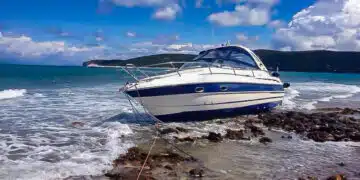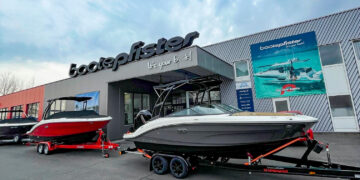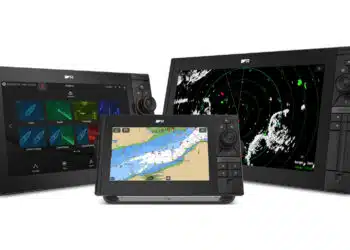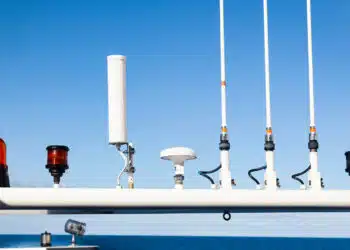VHF radio (marine radio) has been one of the most important means of communication on yachts for many years and will not be replaced by cell phones in the foreseeable future. Especially in maritime emergencies or when registering in marinas, the radio is clearly superior because automatically all ships in the vicinity can listen in and possibly give quick assistance.
In order for the VHF radio on the ship to work well and provide the maximum range, some points are very important and must be taken into account.
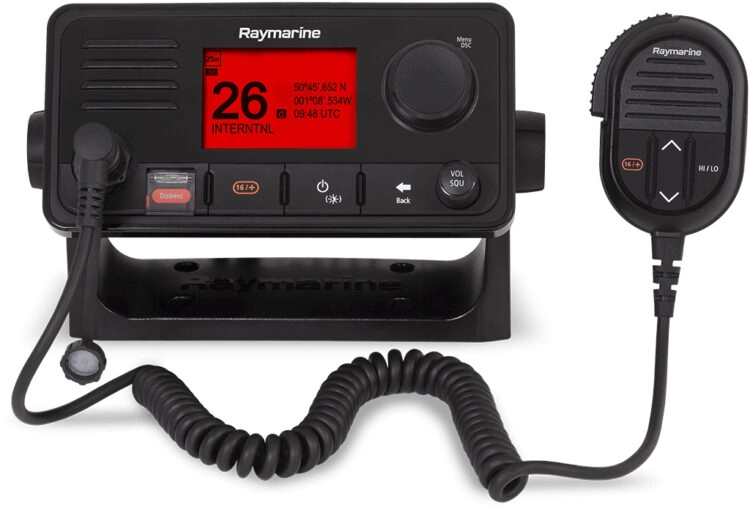
Antenna and cable
A VHF radio needs a good antenna and an equally suitable antenna cable. Often a RG58U cable is used, which works well up to a cable length of 6m but brings a strong loss of transmission power at greater lengths. Therefore, it is necessary to check the cable length of the antenna cable before installation in order to choose a suitable cable.
| Cable designation | Diameter | Max. Length with low power loss |
|---|---|---|
| RG58U 50 Ohm | 5 mm | 6 m |
| CO100 50 Ohm | 6 mm | 30 m |
| Aircell 7 50 Ohm | 7 mm | 30 m |
| RG213U 50 Ohm | 13 mm | 40 m |
The antennas are available in different lengths. The longer the antenna, the better the transmission performance when the antenna is vertical. Shorter antennas are often used on sailing yachts, because this allows the radiation to be targeted parallel to the horizon even when the antenna is tilted. Therefore, even with long antennas it is important that they are mounted vertically and not tilted backwards, if maximum range is desired.

Of course, the emission occurs further than the area drawn in yellow. This is only to clarify the function so chosen!© Werner Ober GmbH & Co KG Stock
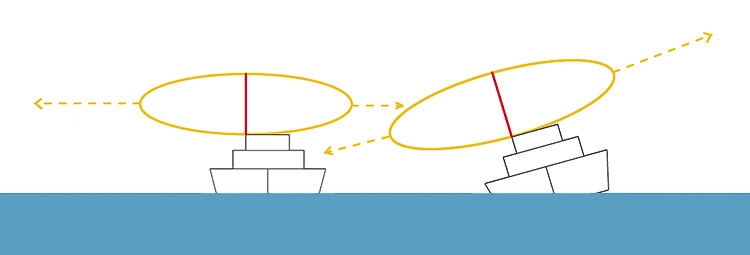
Naturally, the transmission takes place further than in the yellow drawn area. This is only to clarify the function so chosen!© Werner Ober GmbH & Co KG Stock
An equally important point is the correct mounting of the antenna connectors. The PL259 connector is the most common connector for radio cabling. Here it is particularly important that there is good contact with the cable shield and that the hot lead (inner lead of the coaxial cable) is soldered to the connector (see blue arrow).
If an AIS with an antenna splitter is also mounted on the vessel, must use a wideband VHF antenna (20MHz) so that both the radio and the AIS can work well. With a standard VHF antenna, a standing wave error may be displayed on the AIS and the AIS transmission may not occur.
Range of VHF radios
.
The theoretical range of a VHF radio can be calculated very easily. For this purpose, the following formula applies:
distance (nm) = √(1.42 x antenna height in feet).
e.g. if an antenna is on a 30 foot mast (about 9m):
√(1.42 x 30) = 6.5 nautical miles (approximately)
Approval
Any radio equipment (like all transmitting equipment as well as radar, AIS, SART…) must be approved in that country under whose flag the vessel is registered. In addition to the Declaration-of-Conformity, the notification (this is done by the manufacturer/importer) is required in the corresponding country of registration. During registration, the MMSI (Mobil Maritime Ship Identity) is assigned, which must be programmed into the radio. For equipment that is also used on inland waterways, the telecommunications authority also issues the ATIS number.
As of November 2018, manufacturers are only allowed to sell marine radios with the ability to connect an external GPS antenna. Even if the radio has a built-in GPS, this connection must be available. Devices without DSC (Digital-Selective-Calling = this is the new distress call facility where the GPS position and the MMSI number of the vessel is always sent along), will no longer be allowed.
Also note that the Declaration-of-Conformity is required for registration and it must not be older than 5 years. If you buy a used boat and there is already a radio with MMSI number installed, must delete this number. You can not do this yourself and can only be done by a corresponding service station of the radio manufacturer. (for Raymarine e.g. company Werner Ober GmbH & Co KG – Yachtelektronik, contact see below).
VHF handheld radios can be approved on Austrian-flagged vessels only in addition to a fixed installed radio system and must of course also be registered.
Features and options
Every current VHF radio must have the DSC function described above. In case of distress at sea, the corresponding button (this is red and secured behind a flap) is pressed. Then predefined distress messages are shown on the display and the applicable one is selected, and the distress call is confirmed. The unit will then transmit the distress message with the current position, date and time until a coastal radio station responds. It then switches to a working channel to coordinate assistance. During this time, there is no need to continuously radio mayday-mayday, but work can continue on the problem resolution.
There are also radios available with multi-station function or in a black box solution (the transceiver is installed hidden and “only” the handsets with display are visible).
With these devices several radio stations can be connected to one device, e.g. to be able to communicate from the flybridge as well as from the main helm station.
These second stations can be solved with cable or also wirelessly. With many devices there is also an intercom function (intercom) between the stations.

With the highest quality radios, a pressure chamber horn (Loudhailer) with intercom function can also be connected. This allows the radio to easily talk to the crew member at the forecastle or the marina worker. These radios also have the ability to use the pressure chamber horn as a foghorn or siren.
Combined radios with built-in AIS receiver are also available. Radio systems with built-in AIS transponder are hardly available and very vulnerable, because the transmitting power must be switched continuously between AIS transmission and VHF transmission. This is VERY hard on the power amplifiers and reduces the lifetime.
The formerly used function to connect to the public telephone network from a coastal radio station is hardly used anymore and has been largely replaced by cell phones. Only in areas with poor GSM network coverage is this function still occasionally used.
In conclusion, VHF marine radio will remain in use as a means of communication internationally and near the coast for a long time to come and is also mandatory in almost all equipment lists.
Information and advice
Specialist for consulting and installation of yacht electronics is the company WERNER OBER GmbH & Co KG – Yachtelektronik.
Werner Ober GmbH & Co KG
Yacht electronics
Reichsstrasse 38
6890 Lustenau | Austria
Tel: +43 (0)5577 824 19
Email: werner.ober@yachtelektronik.at
Web: www.yachtelektronik.at






